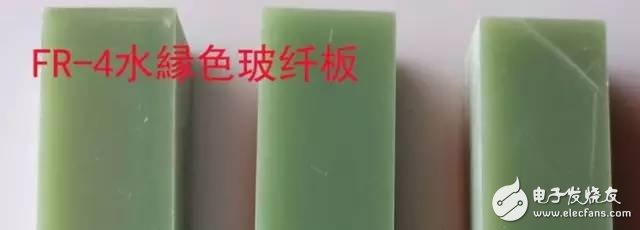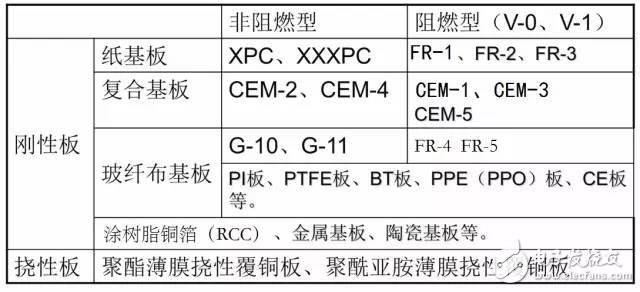1. The FR-4 we often choose is not the name of a material. We often refer to "FR-4" as a code name for a flame-resistant material. It means a material specification that the resin material must be self-extinguishing after being burned. It is not a material name , but a kind of material . The material grade, so there are many types of FR-4 grade materials used in general circuit boards, but most of them are made of so-called four-function (Tera-Function) epoxy resin plus filler (Filler) and fiberglass. The composite material made. For example, the FR-4 water green fiberglass black fiberglass board that our family is now doing has the functions of high temperature resistance, insulation and flame retardancy. Therefore, when choosing materials, everyone must figure out what characteristics they need to achieve. This makes it easy to purchase the products you need. Flexible Printed Circuit Board (FPC) is also called flexible printed circuit board, or soft printed circuit board. A flexible printed circuit board is a product that is designed and fabricated on a flexible substrate by means of a printed circuit. There are two main types of printed circuit board substrates: organic substrate materials and inorganic substrate materials, and most of them are organic substrate materials. PCB substrates used in different layers are also different. For example, prefabricated composite materials are used for 3 to 4 layers, and glass-epoxy materials are mostly used for double panels. 2, choose the board, we need to consider the impact of SMT In the lead-free electronic assembly process, the degree of bending of the printed circuit board when heated due to the increase in temperature is increased. Therefore, in the SMT, it is required to use a plate having a small degree of bending, such as a FR-4 type substrate. Due to the influence of the expansion and contraction stress on the component after the substrate is heated, the electrode peeling will be caused and the reliability will be lowered. Therefore, the material expansion coefficient should be paid attention to when selecting materials, especially when the component is larger than 3.2×1.6 mm. PCBs used in surface mount technology require high thermal conductivity, excellent heat resistance (150 ° C, 60 min) and solderability (260 ° C, 10 s), high copper foil bond strength (1.5 × 104 Pa or more) and flexural strength (25 ×104Pa), high electrical conductivity and small dielectric constant, good punchability (accuracy ± 0.02mm) and compatibility with cleaning agents. In addition, the appearance is required to be smooth and flat, and warpage, cracks, scratches and rust spots are not allowed. 3, PCB thickness selection Printed circuit board thicknesses are 0.5mm, 0.7mm, 0.8mm, 1mm, 1.5mm, 1.6mm, (1.8mm), 2.7mm, (3.0mm), 3.2mm, 4.0mm, 6.4mm, of which 0.7mm and 1.5 The mm-thickness PCB is designed for use with gold-finger double-panel designs, with 1.8mm and 3.0mm non-standard sizes. Printed circuit board size From the production point of view, the smallest single board should not be less than 250 × 200mm, the general ideal size is (250 ~ 350mm) × (200 × 250mm), for PCBs with long sides less than 125mm or wide sides less than 100mm, easy Use the jigsaw method. The surface assembly technique specifies a bending amount of the substrate having a thickness of 1.6 mm as upper warping ≤ 0.5 mm and lower warping ≤ 1.2 mm. Generally, the allowable bending rate is 0.065% or less. According to the metal material, it is divided into three types, which are shown by a typical PCB. According to the structure, the soft plug is divided into three types, and the electronic plug-in is also developed to a high number, miniaturization, SMD, and complexity. . The electronic insert is mounted on the board by pins and soldered to the other side. This technique is called THT (ThroughHoleTechnology) plug-in technology. This way, each PCB is drilled on the PCB, indicating the typical application of the PCB. 4, drilling With the rapid development of SMT chip technology, the need for conduction between the multilayer circuit boards is ensured by post-drilling electroplating, which requires various drilling equipment. In order to meet the above requirements, at present, PCB performance CNC drilling equipment with different performances has been introduced at home and abroad. The production process of printed circuit boards is a complicated process. It involves a wide range of processes, mainly in the fields of photochemistry, electrochemistry, and thermochemistry. In the manufacturing process, the number of process steps involved is also relatively large. The layer circuit board is taken as an example to illustrate the processing steps. Drilling is an important process in the whole process. The processing time of the hole is also the longest. The positional accuracy of the hole and the quality of the hole wall directly affect the metallization and patching of the subsequent hole, and also directly affect the printed circuit. Plate processing quality and processing cost CNC drilling machine principle, structure and function The common methods for drilling holes on the circuit board are numerical control mechanical drilling method and laser drilling method. At this stage, mechanical drilling method is most used. Anti-Blue Light Hydrogel Screen Protector
Blue light filter-using blue light filter technology can eliminate blue light on the phone screen, thereby reducing eye fatigue and fatigue. And keep your eyes healthy and avoid staring at the screen.
Ultra-transparent and protective Ultra-high-quality Ultra HD provides you with clear viewing effects. Let you fully enjoy the super retina display of the screen.
Evacuation Waterproof and Waterproof-The hydrophobic and loose oil transparent layer is used as the final coating to protect screen fingerprints, liquid residues and other stains, keeping your phone in its original condition all day long.
The 0.14mm high-sensitivity touch Ultra-Thin Protective Film can provide real touch and high sensitivity, ensuring that the original high-response touch is not disturbed.
If you want to know more about Anti-Blue Light Screen Protector products, please click the product details to view the parameters, models, pictures, prices and other information about Anti-Blue Light Screen Protector.
Whether you are a group or an individual, we will try our best to provide you with accurate and comprehensive information about the Anti-Blue Light Screen Protector!
Anti-blue Screen Protector, Anti-blue Light Protective Film, Anti-blue Light Screen Protector,Anti Blue Light Screen Protector,Blue Light Blocking Screen Protector Shenzhen Jianjiantong Technology Co., Ltd. , https://www.jjtscreenprotector.com
